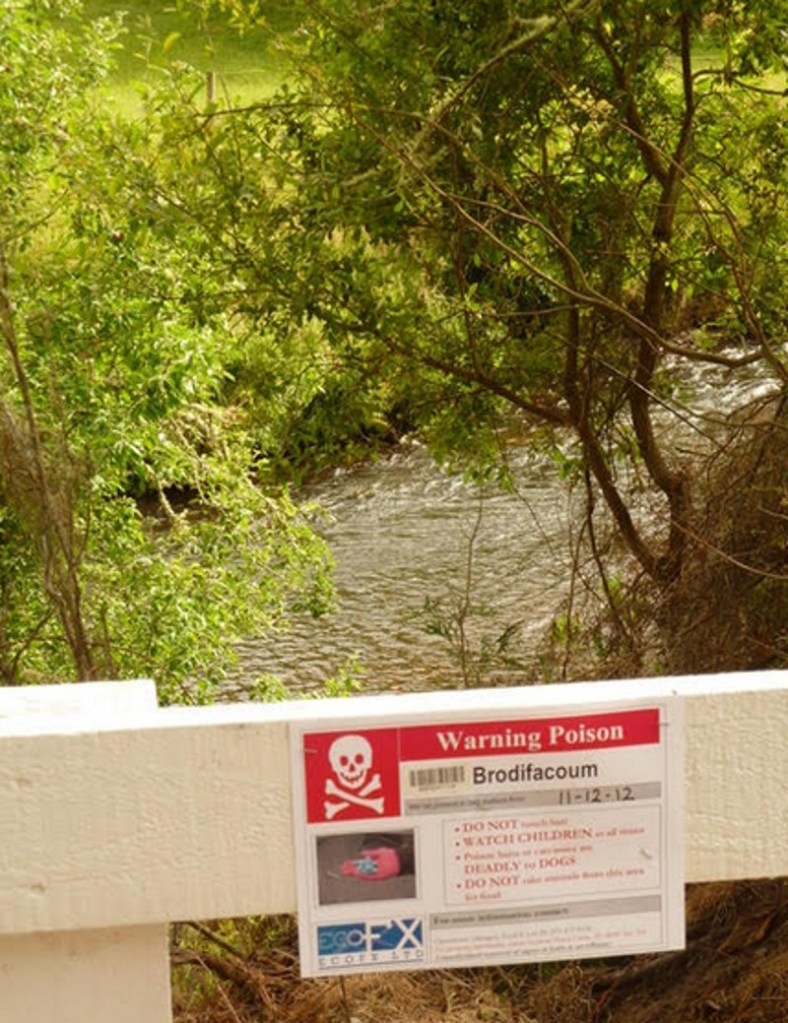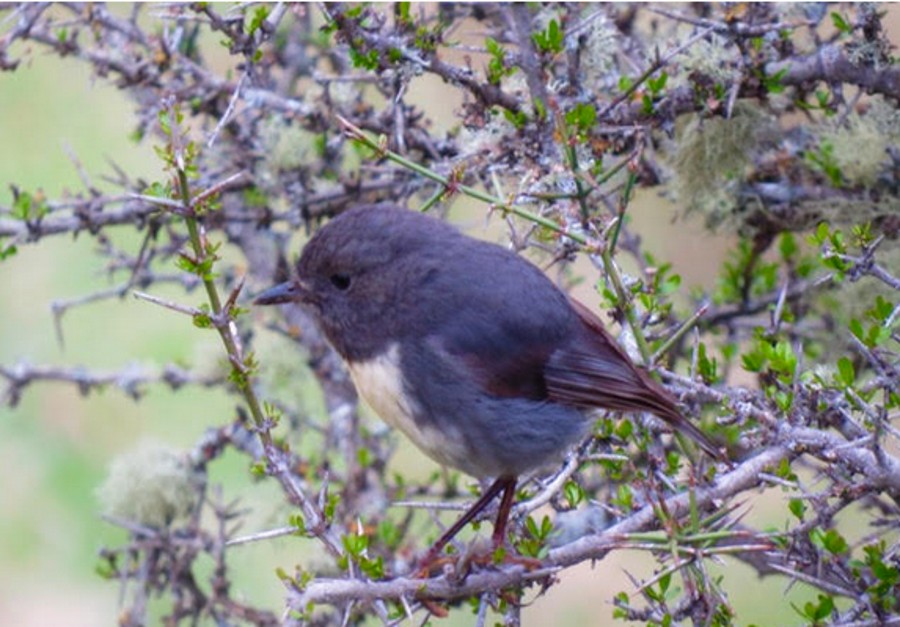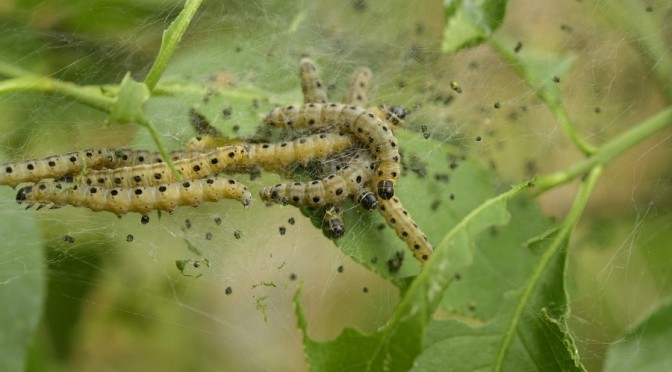Rt Hon Simon Upton
Dear Sir –
This is an open letter as it involves all living in New Zealand.
I am writing to you because of your current position as Parliamentary Commissioner for the Environment, a second term; your earlier position at the OECD responsible for the chemicals program, and prior to that, your former position as a New Zealand politician. You should have considerable knowledge on the subject of 1080.
I believe you should also have considerable influence in wielding authority if and where needed.
Since your early days in the 90’s of being a minister of health or the environment, a great deal of data has become available which contradicts the virtues of 1080. This is a major concern and something I am sure you should be interested in.
I have read some of your presentations and speeches to different organisations and letters to various MP’s on environmental concerns. Also the lack of regulatory infrastructure in place needed to oversee, decide or make recommendations related to the many thousands of chemicals in use today in NZ. That is disturbing and makes me wonder how on earth did 1080 ever get to be accepted to be used in NZ in the first place? It appears NZ has Authorities, NGO’s, government departments such as the EPA or MPI but not one to make immediate approval or refusal decisions on these chemicals – thousands of them in fact.
New Zealand uses 90% of the world supply – tons as opposed to tablespoons by other countries, of a poison with the classification by the World Health Organisation of 1A extremely hazardous, and then drops poison baits out of helicopters over vast areas of land and into water which we drink, to supposedly save our native wildlife. This is the official DOC narrative and is truly astonishing and extraordinary. People wear hazmat suits when around it.
Because no other country uses such quantities or drops huge amounts of 1080 or brodifacoum into the environment and ecosystem there is no scientific evidence available of the sub-lethal and chronic effects on humans, wildlife, insect life, birds, all life except plants and some micro-organisms. How about long-term ecological damage? 1080 is an eco-system poison.
Because of your experience and knowledge, I have questions which I hope you can answer:
Why are reports, books, testimonies by anyone who challenges the DOC narrative ignored? I will mention some below.
Quinn and Pat Whiting-O’Keefe, independent scientists who reviewed more than 100 DOC Scientific Papers say
“There is no credible scientific evidence showing any species of native bird benefits from 1080 drops.” These two have impeccable credentials that cannot be ignored when it comes to evaluating this whole subject. They say a lot more which conflicts with what we are told to believe by our government and related agencies. One of their two reports is immediately below.
https://acrobat.adobe.com/id/urn:aaid:sc:AP:8d386759-9154-4daf-8ae7-368cf9bca4cd
There is another report – 89 pages with a great deal more detail as well by these two.
Independent Scientist Dr. Jo Pollard and her website 1080 Science.
Professor Fiona McQueen, a rheumatologist and environmentalist who wrote The Quiet Forest.
Dr. Koen Margodt’s report which was written as a result of the late Dame Jane Goodall being so concerned about the ethics of 1080, she asked that this be written.
At War With Nature – Corporate Conservation and the Industry of Extinction by the late Bill Benfield as well as The Third Wave.
The Killing Nation, aptly called, by Reihana Robinson; as well as other books.
New Zealand’s Changing Diversity by Jim Hilton and Roger Childs; there are more I have not listed here.
Articles by Marc Bekoff, Ph.D., who worked closely with the late Dame Jane Goodall as co-chair of the ethics committee of the Jane Goodall Institute. Marc has written over 30 books and is known for his work on animal research, animal behaviour and emotions and compassionate conservation. He raises the alarm and questions animal cruelty in NZ with our treatment of wildlife. Marc has many awards to his name.
I must also mention the excellent award winning documentary Poisoning Paradise by the Graf Boys – not allowed to be played on our airwaves. Disturbing detail of wildlife dying; hormone/endocrine disruption concerns stated by Dr Sean Weaver, and human health concerns as well, mentioned by the late Dr. Peter Scanlon. Their website TV Wild has excellent information and videos on it.
As NZ has five times the world statistic of motor neuron disease and various cancers through the roof why have no human health studies been carried out?
Anything that challenges the “inhouse science” of DOC is ignored and never acknowledged. Why?
The WHO stated there is NO acceptable amount of 1080 in water, why did NZ govt ignore and change that?
How have NZ Government and users of 1080 been allowed to ignore data on the original Safety Data Sheet in favour of their own? These are Safety Data Sheet violations. Major violations – 1080 found dumped and exposed on Stewart Island in 2018 (covered by Patrick Gower).
1080 found in ground water and traced to a landfill where the toxin had leached out of the baits. Is this not a serious health and safety issue? (Environmental Health Watch April 6 2019 – Is there 1080 in your landfill …) – this website has a great deal of information on this subject. There are other violations as well.
Are these above not State Sanctioned crimes? Acts of Omission by the State?
Peter Notman, an entomologist, Mike Meads, an invertebrate ecologist, and Dr. Valerie Orchard, a microbiologist were all made redundant when they all raised concerns which did not align with what DOC wanted. “Safe science” is preferred by DOC. Chapter 11 of At War With Nature, is called “Conservation Science – Its How We Get The Message Right” – the late Bill Benfield describes in great detail how this “safe science” came to be and not allowed to be challenged.
Why have there not been prosecutions of individuals? Of Companies/agencies concerned?
There are many more questions which need answering. Is the careless and indiscriminate use of a 1A extremely hazardous toxin which is dropped in huge quantities across our land and waters not environmental terrorism?
Is it not ecocide? Where dying carcasses are left which then creates secondary poisoning on a massive scale? Horrific carnage. Where cruelty of a heinous nature is suffered by all which come into contact with and ingest 1080? Deer right now are having their babies – these babies will watch their mothers thrashing around in agony dying and then starve to death themselves. Other young, starving watching their mothers screaming in pain as they die – what sort of country is this where the Department of Conservation which holds responsibility for the welfare of our wildlife is killing it and rare native species are or have become extinct? Killing the basic on the chain, the insect life – which then kills the birds as their food is gone and they starve to death or die poisoned. Vilifying non-natives and calling them pests? In particular, the possum.
Because NZ does not appear to have the technical ability to test for 1080 correctly, or will not, how many humans have been affected in some way as well?
President Nixon banned it in 1972, in the U.S., the country of origin, because of high toxicity, lethal effects, environmental and safety concerns, cruelty and harm suffered by wildlife, targeted and non-targeted. It was approved in very limited amounts later by President Reagan.
The second reason for banning was the terrorism risk. With huge amounts of 1080 being brought into this country, and held in built-up areas in NZ, surely these are major causes for concern? According to Predator Defense in the U.S. “both the FBI and Canadian Security Intelligence Service list Compound 1080 as a substance that may be sought for use as a possible chemical warfare agent in public water supplies”. This threat cannot be underestimated with daily events happening somewhere. If the U.S. has concerns of terrorism potential, with their guns and weapons, is it not absurd that we here in NZ blindly keep using it, dropping it out of helicopters like confetti year after year? Dangerous? Is not the terrorism threat very real? Should this deadly toxin not be locked up with the equivalent of something such as Fort Knox?
1080 is being dropped in our waters which we drink, by our own government. The hoppers have been filmed spilling the baits carelessly; accidentally, killing farm animals, pets, birds, insects, poisoning the landscape – how can the birds be saved if the insects they rely on for food are poisoned or dead?
The fact that these deadly drops are repeated year after year means a huge failure; on the other hand, if it succeeded then the money supply would dry up and cease as well as the employment of those involved in this cruel activity which is not needed. Is this one reason why after 70 years this practise is still continuing?
Tons of 1080 are being dumped in landfills in and around NZ. Why is it being stockpiled here and then after four years which is the shelf life, it has to be disposed of? How? Where?
With so much government information contradicting testimonies, videos, reports by highly qualified scientists, books written by specialists in their field all following a similar pattern and disagreeing with DOC and related agencies, why have they at the very least not been investigated or shut down? DOC are perpetually being economical with the truth. They even contradict their own data. Do not follow their own policies. What is it going to take to stop this dangerous and failing experiment year after year?
There are alternatives – why are they not being used? Traps, hunters, which are sources of employment – also a possum fur industry.
The possum excuse is that – an excuse; the Tb was from cattle and then possums – thousands were found when tested to have no Tb – (the late Richard Prosser and Nathan Guy – Hansard). Possums made out to be villains by DOC when we are virtually Tb free and children encouraged to kill them? Unconscionable behavior – was that sanctioned? Why not?
Why has a major source of food been taken away from the people? A HIKOI the length and breadth of the country ignored? Thousands of people speaking out against 1080 not listened to. Where is government representation of the people of NZ?
These are some of the many questions that need to be answered as the consequences are unknown and could be deadly.
With daily articles of the threat of war looming in various parts of the world, the public unease at immigrants not embracing NZ values or even an individual living here with a personal grudge, the lack of security and safety involved in storage of this deadly toxin, the large amounts lying around in the open and not buried in NZ, silence by people who should be speaking up and not for fear of consequences like losing their employment, accidents just waiting to happen such as a loaded helicopter crashing into a dam or a truck carrying it falling into a major water supply – millions could die. There is no antidote.
The evidence against the use of sodium monofluoroacetate/1080 and how it is used here in NZ is damning. Why has it not been banned?
How is this not a NATIONAL SECURITY ISSUE?
I would really appreciate a response from you, and also responses from anyone copied directly into this Open Letter.
Sincerely,
Rowena Kaleopa
Copied to Rt Hons Christopher Luxon
Winston Peters
David Seymour
Shane Jones
Mark Mitchell
Tama Potaka
Andre Hoggart
Penny Nelson
Penny Simmonds
Police:
Richard Chambers
Mike Pannett
Copied also to –
Brooks Fahy, Predator Defense
Mark Bekoff, Psychology Today
Dr Jo Pollard
Clyde Graf
The Whiting-O’Keefes
Professor Fiona McQueen
Reihana Robinson
Jim Hilton
Environmental Health Watch NZ
Photo Credit: envirowatchnz.com





















































You must be logged in to post a comment.